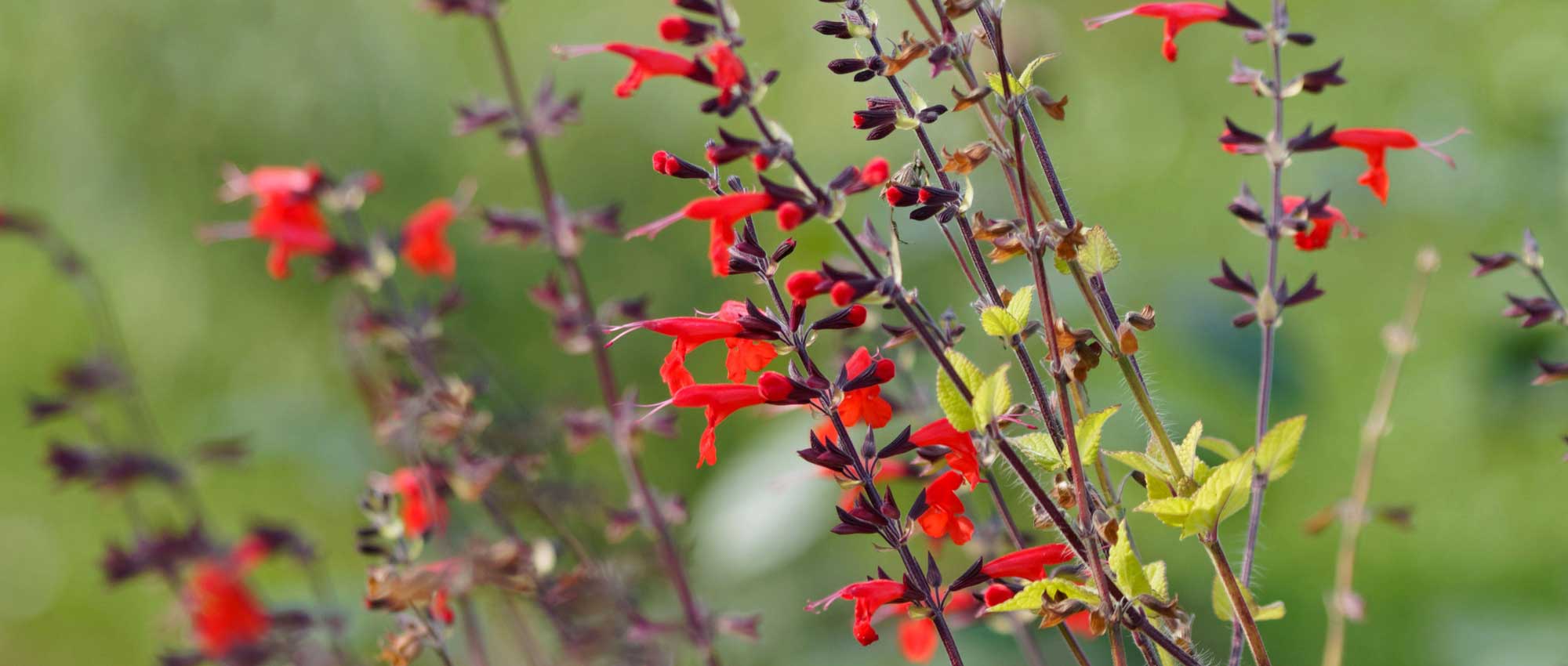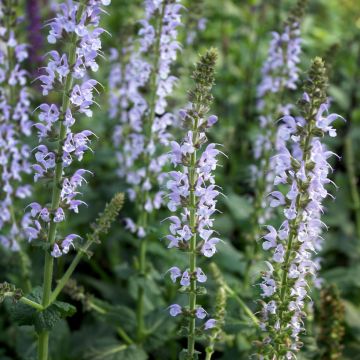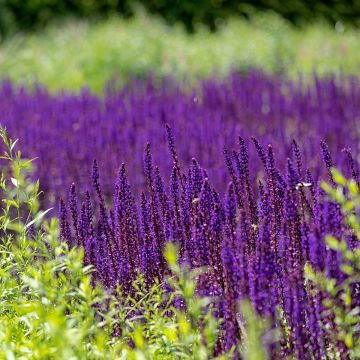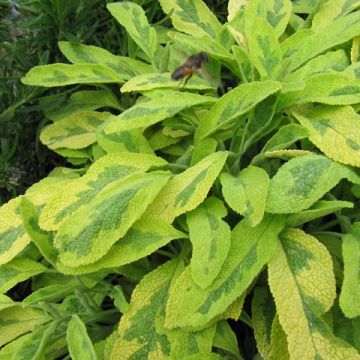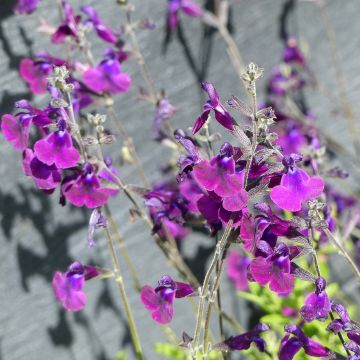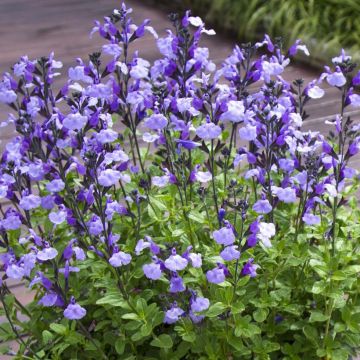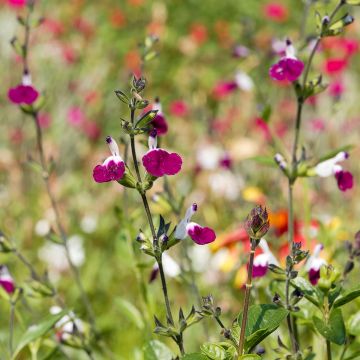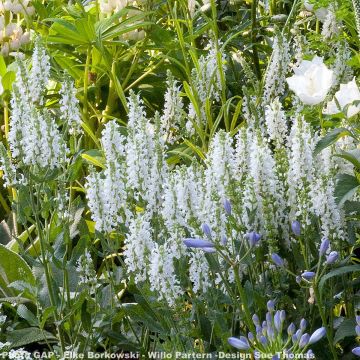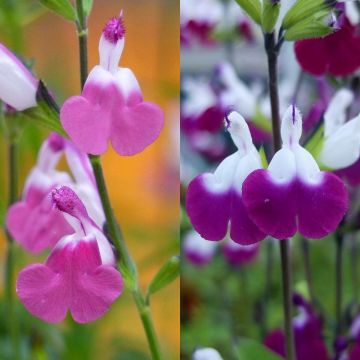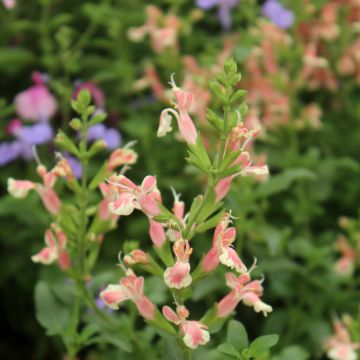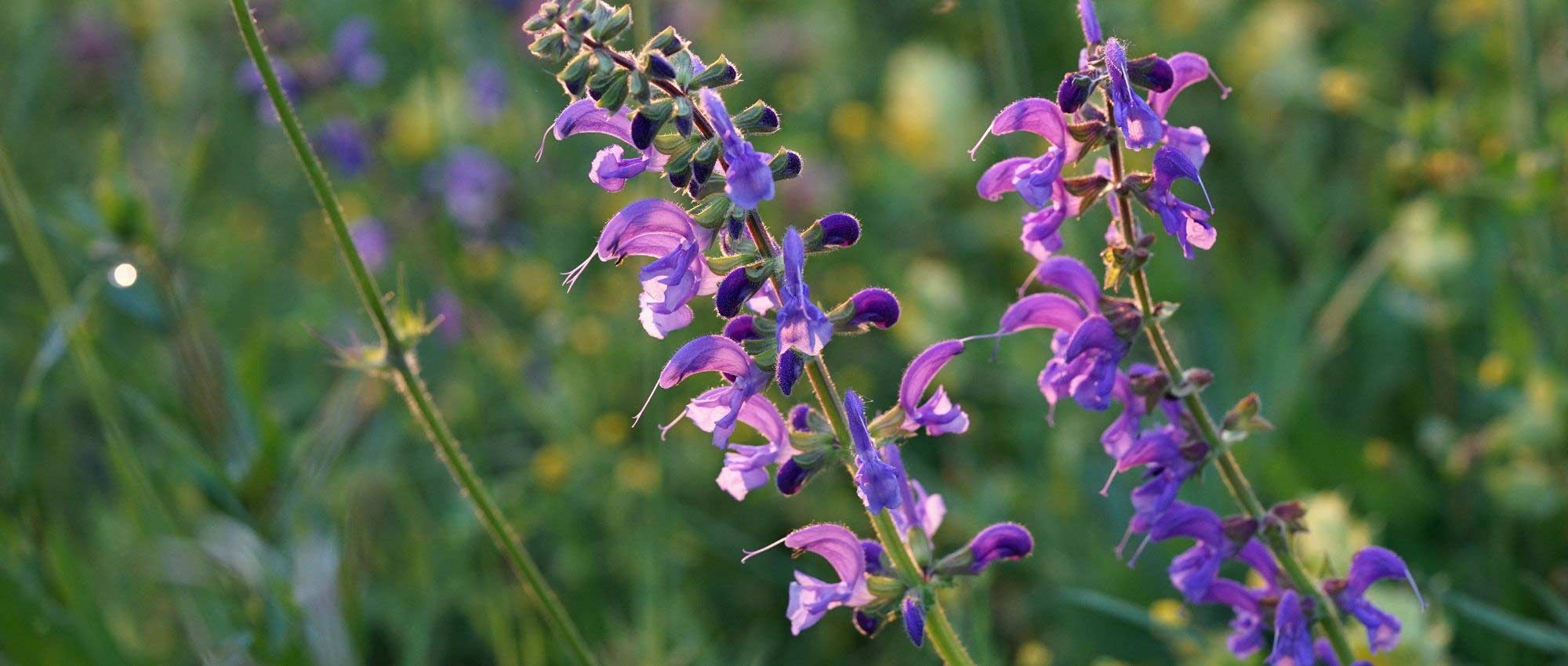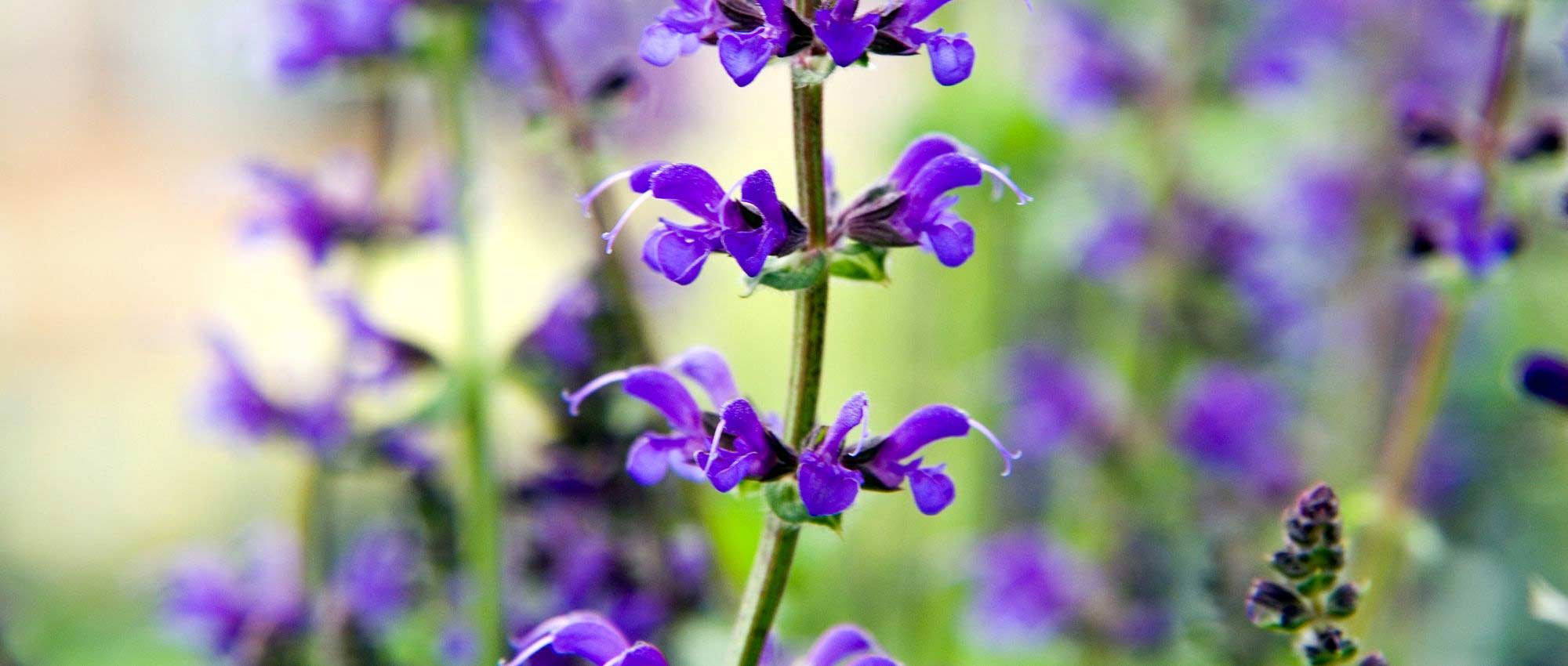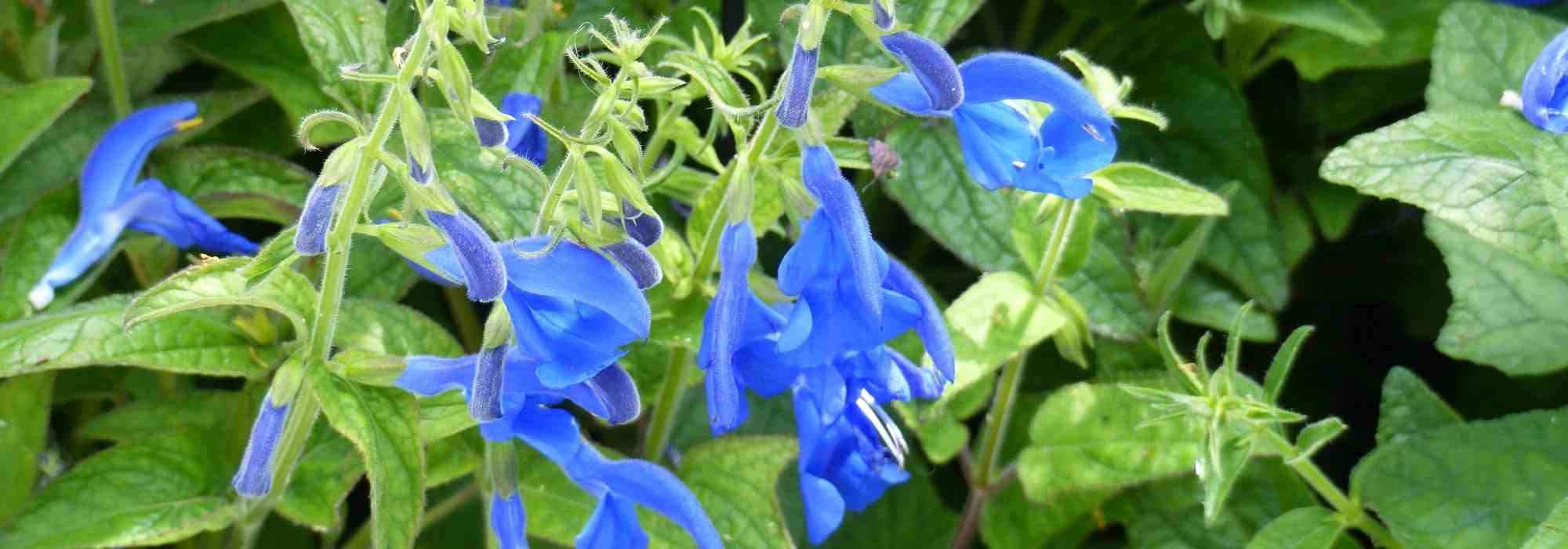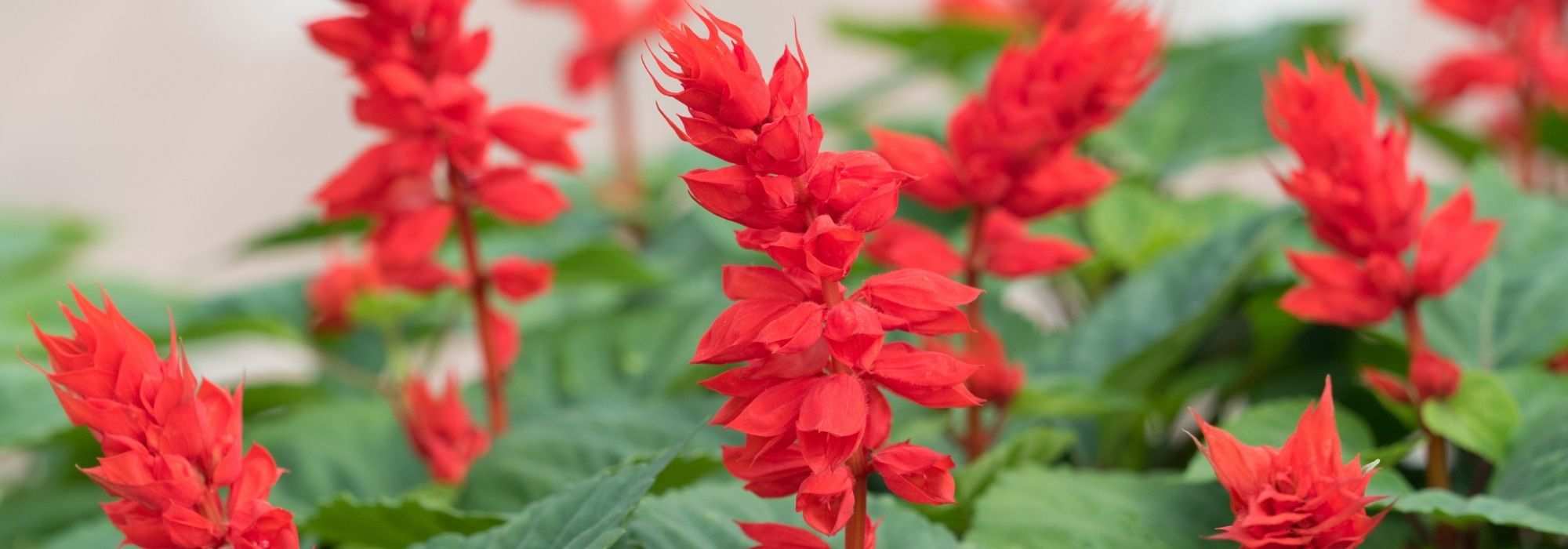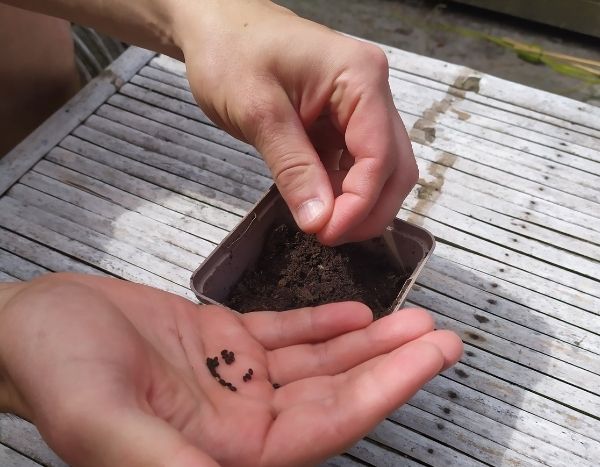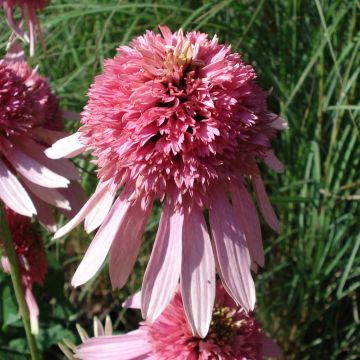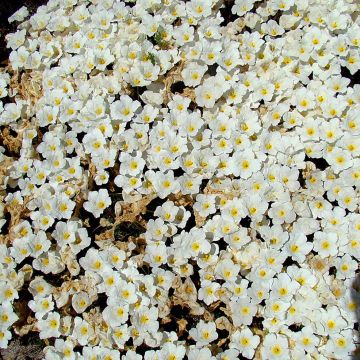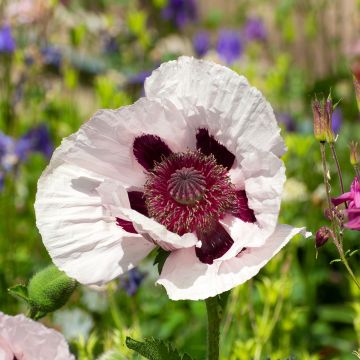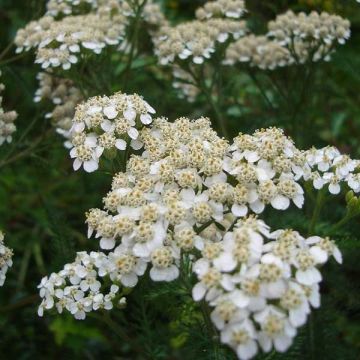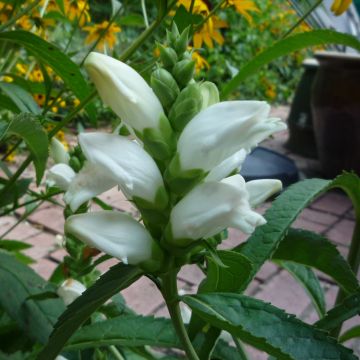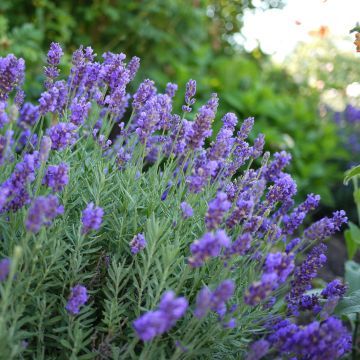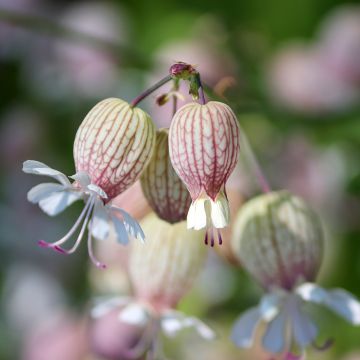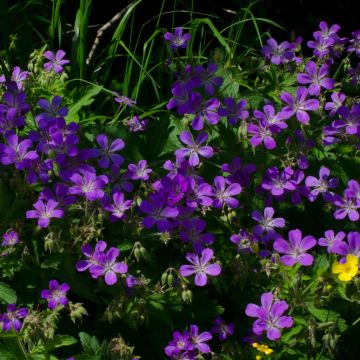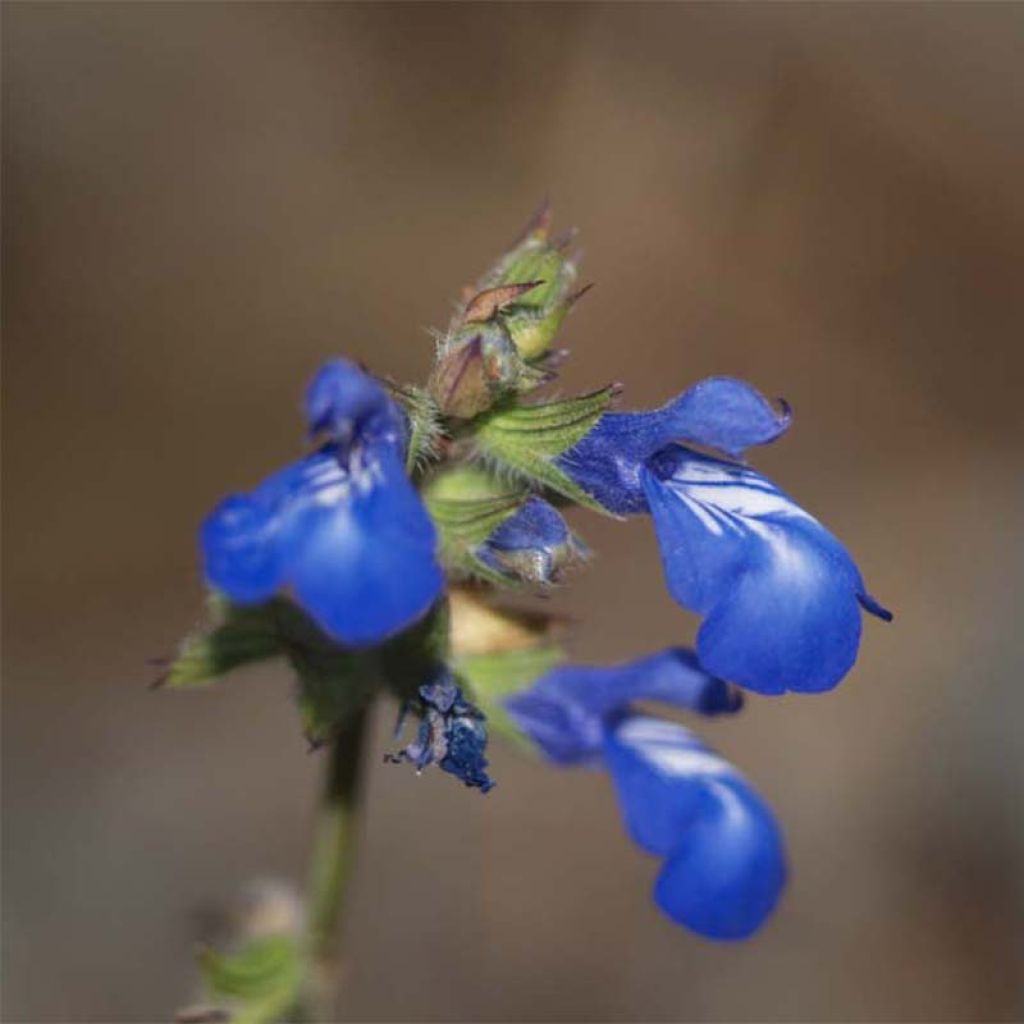

Salvia forreri - Sauge de Forrer
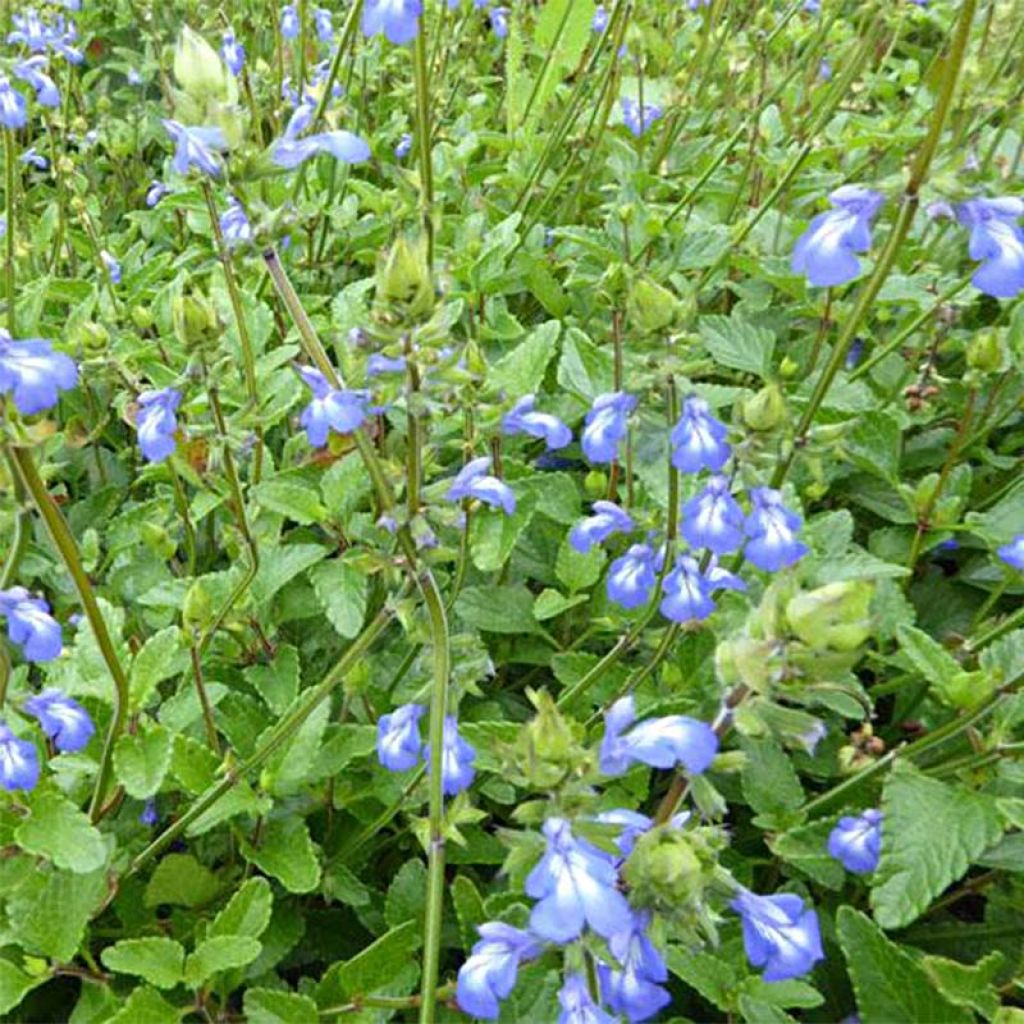

Salvia forreri - Sauge de Forrer
Salvia forreri
Salvia forreri
Received 3 scrawny sage plants for which I am awaiting a refund. No apology from them. No goodwill gesture. First and last order!!
Nanou , 05/03/2024
Special offer!
Receive a €20 voucher for any order over €90 (excluding delivery costs, credit notes, and plastic-free options)!
1- Add your favorite plants to your cart.
2- Once you have reached €90, confirm your order (you can even choose the delivery date!).
3- As soon as your order is shipped, you will receive an email containing your voucher code, valid for 3 months (90 days).
Your voucher is unique and can only be used once, for any order with a minimum value of €20, excluding delivery costs.
Can be combined with other current offers, non-divisible and non-refundable.
Home or relay delivery (depending on size and destination)
Schedule delivery date,
and select date in basket
This plant carries a 12 months recovery warranty
More information
We guarantee the quality of our plants for a full growing cycle, and will replace at our expense any plant that fails to recover under normal climatic and planting conditions.

Would this plant suit my garden?
Set up your Plantfit profile →
Description
Salvia forreri is a perennial sage native to Mexico and Texas, and little known to gardeners. It is a suckering, aromatic and flowering plant, perfectly adapted to dry soils. It spreads through suckers and quickly forms a beautiful ground cover of light green and shiny leaves. Its main asset is a very long summer and autumn flowering period, particularly bright in light blue and white. Very useful as a border plant in a dry garden, perfect in a rockery, this sun-loving and heat-loving sage is an excellent perennial for mild climates. In colder regions, it can be grown in a container, which allows it to be stored indoors during severe frosts.
Forrer's sage endemic to several provinces in Mexico where it grows between 6,500 and 9,500 meters (21 and 31 feet) above sea level, is sometimes considered a subspecies of Salvia arizonica. It is a perennial herbaceous species and stoloniferous that tolerates sun and drying, rocky, even limestone soils. Like all other sages, it belongs to the large family of lamiaceae or labiates. Its foliage is semi-evergreen, its leafy stems form clumps that can cover 80 cm (32in) in diameter, or even more over the years. Its growth is very rapid; a plant will double in size within the year of planting. It produces from June-July to October (with a break during the height of summer in dry and hot climates) loose spike-like inflorescences, reaching a height of 30 cm. The small bilabiate flowers are light blue, adorned with a small white spot in the centre. They are honey-bearing and nectar-bearing, and are highly prized by butterflies and bees. The small leaves are ovate to oblong, puckered, rough, with serrated edges, forming a beautiful foliage. They are fairly light green, slightly glossy, and contain a fragrant essential oil, noticeable when crushed.
Salvia forreri is vigorous enough to withstand weed competition once established. It excels on dry slopes where it helps to stabilize the soil, and works wonders as an edge plant in well-drained soil. It is a very resistant plant, tolerating spartan growing conditions, but dreads cold and wet weather. Along borders or in rockeries, for example, combine this plant with aubrietas, thymes, Iberis, santolines or even Erigeron karvinskianus. Also, pair with old roses and Nepeta faassenii, Lychnis coronaria, light grasses.
With over 900 species of annuals, perennials, and shrubs, distributed worldwide except in very cold regions and tropical forests, the Salvia genus is the most diverse variety in the lamiaceae family. The name Salvia, dating back to Roman times, derives from the Latin salvus 'healthy' in reference to the medicinal properties of common sage.
Salvia forreri in pictures
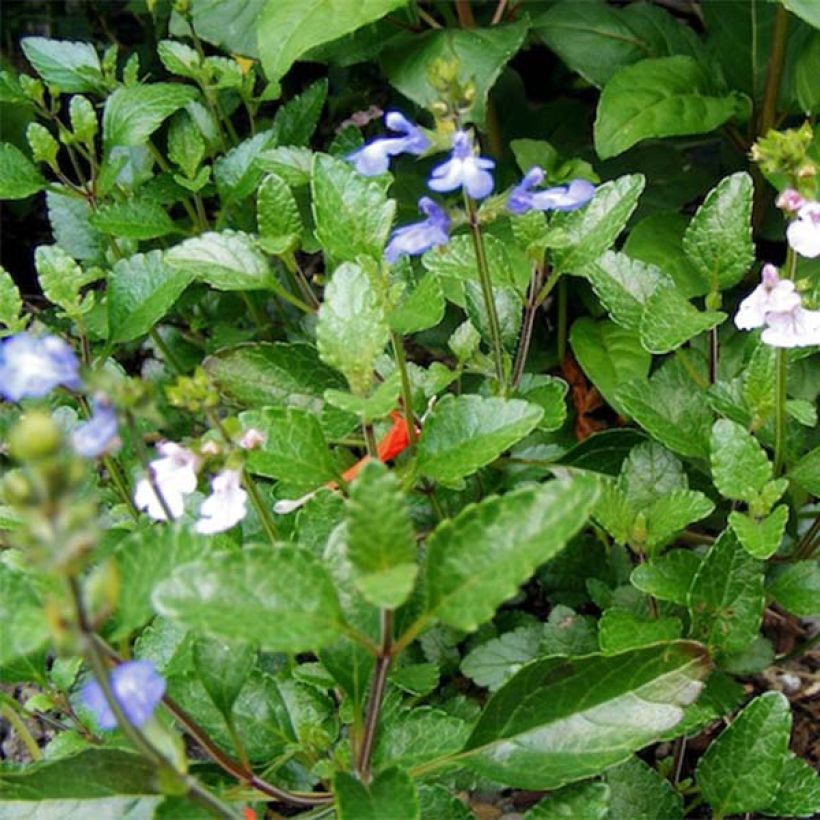

Flowering
Foliage
Plant habit
Botanical data
Salvia
forreri
Lamiaceae
North America
Other Salvia - Sage
View all →Planting and care
Install the Salvia forreri in a very well-drained, light, humus-rich or, on the contrary, poor and rather limestone soil, which does not retain moisture in winter. This plant tolerates drought well and withstands frost of the order of -7/-8°C (19.4/17.6°F). Mulch the stump in winter if you plant it in open ground in a borderline hardiness zone. It does not appreciate heavy and waterlogged soils in winter, which harm its hardiness. You will plant it in a very sunny exposure. It is a sober and undemanding plant, very floriferous, ideal in a natural garden. Regular removal of faded inflorescences promotes floral reblooming.
Planting period
Intended location
Care
Planting & care advice
-
, onOrder confirmed
Reply from on Promesse de fleurs
Similar products
Haven't found what you were looking for?
Hardiness is the lowest winter temperature a plant can endure without suffering serious damage or even dying. However, hardiness is affected by location (a sheltered area, such as a patio), protection (winter cover) and soil type (hardiness is improved by well-drained soil).

Photo Sharing Terms & Conditions
In order to encourage gardeners to interact and share their experiences, Promesse de fleurs offers various media enabling content to be uploaded onto its Site - in particular via the ‘Photo sharing’ module.
The User agrees to refrain from:
- Posting any content that is illegal, prejudicial, insulting, racist, inciteful to hatred, revisionist, contrary to public decency, that infringes on privacy or on the privacy rights of third parties, in particular the publicity rights of persons and goods, intellectual property rights, or the right to privacy.
- Submitting content on behalf of a third party;
- Impersonate the identity of a third party and/or publish any personal information about a third party;
In general, the User undertakes to refrain from any unethical behaviour.
All Content (in particular text, comments, files, images, photos, videos, creative works, etc.), which may be subject to property or intellectual property rights, image or other private rights, shall remain the property of the User, subject to the limited rights granted by the terms of the licence granted by Promesse de fleurs as stated below. Users are at liberty to publish or not to publish such Content on the Site, notably via the ‘Photo Sharing’ facility, and accept that this Content shall be made public and freely accessible, notably on the Internet.
Users further acknowledge, undertake to have ,and guarantee that they hold all necessary rights and permissions to publish such material on the Site, in particular with regard to the legislation in force pertaining to any privacy, property, intellectual property, image, or contractual rights, or rights of any other nature. By publishing such Content on the Site, Users acknowledge accepting full liability as publishers of the Content within the meaning of the law, and grant Promesse de fleurs, free of charge, an inclusive, worldwide licence for the said Content for the entire duration of its publication, including all reproduction, representation, up/downloading, displaying, performing, transmission, and storage rights.
Users also grant permission for their name to be linked to the Content and accept that this link may not always be made available.
By engaging in posting material, Users consent to their Content becoming automatically accessible on the Internet, in particular on other sites and/or blogs and/or web pages of the Promesse de fleurs site, including in particular social pages and the Promesse de fleurs catalogue.
Users may secure the removal of entrusted content free of charge by issuing a simple request via our contact form.
The flowering period indicated on our website applies to countries and regions located in USDA zone 8 (France, the United Kingdom, Ireland, the Netherlands, etc.)
It will vary according to where you live:
- In zones 9 to 10 (Italy, Spain, Greece, etc.), flowering will occur about 2 to 4 weeks earlier.
- In zones 6 to 7 (Germany, Poland, Slovenia, and lower mountainous regions), flowering will be delayed by 2 to 3 weeks.
- In zone 5 (Central Europe, Scandinavia), blooming will be delayed by 3 to 5 weeks.
In temperate climates, pruning of spring-flowering shrubs (forsythia, spireas, etc.) should be done just after flowering.
Pruning of summer-flowering shrubs (Indian Lilac, Perovskia, etc.) can be done in winter or spring.
In cold regions as well as with frost-sensitive plants, avoid pruning too early when severe frosts may still occur.
The planting period indicated on our website applies to countries and regions located in USDA zone 8 (France, United Kingdom, Ireland, Netherlands).
It will vary according to where you live:
- In Mediterranean zones (Marseille, Madrid, Milan, etc.), autumn and winter are the best planting periods.
- In continental zones (Strasbourg, Munich, Vienna, etc.), delay planting by 2 to 3 weeks in spring and bring it forward by 2 to 4 weeks in autumn.
- In mountainous regions (the Alps, Pyrenees, Carpathians, etc.), it is best to plant in late spring (May-June) or late summer (August-September).
The harvesting period indicated on our website applies to countries and regions in USDA zone 8 (France, England, Ireland, the Netherlands).
In colder areas (Scandinavia, Poland, Austria...) fruit and vegetable harvests are likely to be delayed by 3-4 weeks.
In warmer areas (Italy, Spain, Greece, etc.), harvesting will probably take place earlier, depending on weather conditions.
The sowing periods indicated on our website apply to countries and regions within USDA Zone 8 (France, UK, Ireland, Netherlands).
In colder areas (Scandinavia, Poland, Austria...), delay any outdoor sowing by 3-4 weeks, or sow under glass.
In warmer climes (Italy, Spain, Greece, etc.), bring outdoor sowing forward by a few weeks.






























